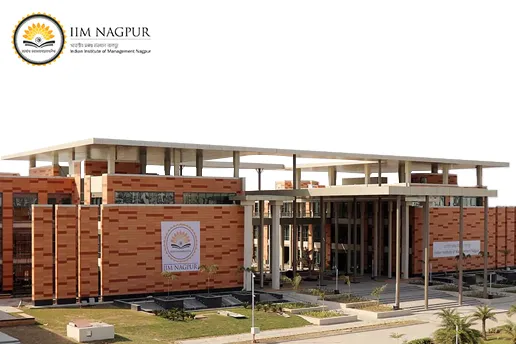
What is Six Sigma?
The term “Six Sigma” is a statistical metric that quantifies the extent to which a process deviates from perfection. When a process operates at the Six Sigma level, it exhibits an exceptionally low failure rate, as low as 0.00034%. This means that it produces virtually no defects, emphasizing the pursuit of near-flawless performance.
Six Sigma is a methodology widely applied across various industries, including manufacturing, healthcare, finance, and the service sector. Its primary goal is to enhance customer satisfaction, minimize operational costs, and ultimately drive increased profitability. By meticulously analyzing and optimizing processes to reduce variations and errors, organizations can ensure a high level of product or service quality, ultimately benefiting both their bottom line and the satisfaction of their customers.
What is Lean Six Sigma?
Six Sigma primarily concentrates on diminishing process variability and enhancing control, while lean methodology aims to eliminate waste, particularly non-value-added procedures, and encourages standardization and workflow optimization. The line between Six Sigma and Lean has become increasingly blurred, and the term “Lean Six Sigma” is now commonly used. This amalgamation of both approaches is vital for achieving effective process improvement.
Lean Six Sigma represents a data-driven and fact-based philosophy of improvement that prioritizes preventing defects over detecting them. It aims to enhance customer satisfaction and boost financial outcomes by reducing variations, minimizing waste, and shortening cycle times. Simultaneously, it advocates the utilization of standardized work procedures and streamlined workflows, ultimately leading to a competitive edge. The applicability of Lean Six Sigma extends to any process with variations and waste, and it emphasizes the involvement of all employees in the improvement process.
Importance of Six Sigma
Waste Reduction
Embracing the principles of Six Sigma empowers you and your organization to streamline processes, resulting in a reduction of overall waste.This unique approach aids in the identification and rectification of areas within your business where resources and time are squandered, ultimately leading to cost savings.
Table of Contents
Enhanced Efficiency
Six Sigma not only focuses on waste reduction but also emphasizes the optimization of processes to enhance efficiency. Through formal training, you acquire the skills needed to make the most of your existing business procedures, utilizing resources more effectively to achieve optimal outcomes.
Error Minimization
Six Sigma places equal importance on both process efficiency and product quality. In a production context, errors can be costly and irreversible. Thus, Six Sigma’s emphasis on getting things right the first time becomes a valuable strategy for saving both time and money.
Mitigated Legal Risk
It may seem almost too good to be true, but the process that saves your company money can also act as a safeguard against potential legal complications. Six Sigma’s unwavering commitment to quality ensures that adopting this methodology can help your organization adhere to international compliance standards, reducing the risk of legal entanglements.
Versatile Applicability
One of the most remarkable aspects of Six Sigma is its adaptability across a wide array of industries. Whether it’s healthcare, manufacturing, retail, or higher education, Six Sigma’s techniques and tools, acquired through your training, can be effectively applied to assist companies in cost reduction and profit enhancement.
Enhanced Earnings
While they say money can’t buy happiness, it certainly can fund a fantastic vacation! Proficient Six Sigma-certified professionals typically experience a substantial 19% increase in their salaries with each certification level. As per recent reports, many Black Belt certification holders have salaries exceeding $100,000.
The 5 Key Principles of Six Sigma
1. Prioritize Customer Requirements
The initial step in the Six Sigma process involves defining “quality” from the perspective of the customers. It’s essential to recognize that each customer may have a unique definition of quality, and it’s the business’s responsibility to align its quality measurement with the customer’s perspective. By addressing customer needs, a business can establish a quality standard that resonates with its clientele.
2. Utilize Data for Variance Identification in the Process
The process variances can be categorized into two types: special cause variation and natural variation. Special cause variation is attributed to external factors, while natural variation represents random fluctuations inherent in the process. Six Sigma focuses on minimizing special cause variation. To pinpoint the root causes of such variations, an in-depth understanding of the process is imperative. Gaining this level of comprehension necessitates a thorough examination of the process, which, in turn, relies on comprehensive data collection and analysis.
3. Continuous Process Improvement to Eliminate Variability
Once the root causes are identified, the next step is to make necessary changes to eliminate process variations and, consequently, defects. In addition to this, it’s vital to seek opportunities to eliminate steps that do not add value to the customer, thereby reducing waste in the process. The focus is on proactively identifying and removing variations, rather than waiting for them to manifest. This proactive approach involves data collection, communication with team members, and an in-depth analysis of data to identify variations that may have become entrenched due to a long-standing practice of “that’s the way we’ve always done things.”
4. Engage Diverse Management and Process Personnel
Six Sigma’s success is built upon the collaboration of effective teams. These teams consist of individuals who take responsibility for implementing Six Sigma processes. Team members require training in Six Sigma methodologies to ensure their effectiveness. Forming cross-functional teams that include individuals from various professional backgrounds is key to identifying and addressing process variations.
5. Demonstrate Flexibility and Comprehensive Approach
Six Sigma necessitates adaptability on multiple fronts. The organization’s management system must be receptive to constructive changes. It is imperative to motivate individuals to embrace system modifications aimed at eliminating process variations. Clearly articulating the advantages of the Six Sigma system to employees at all levels is crucial for fostering enthusiasm and making these changes readily embraced.
The Six Sigma Process of Business Transformation
While there are several Six Sigma methodologies, DMAIC stands as the standard one utilized for business transformation when addressing deviations and problem-solving.
Each of the five phases within DMAIC consists of several steps:
Define
The process commences with a customer-centric perspective.
Step 1
Define the process problem from the customer’s viewpoint.
Step 2
Establish clear objectives and determine what you aim to achieve.
Step 3
Map the process and ensure alignment with stakeholders to confirm that it is directed in the right path.
Measure
The second phase emphasizes metrics and measurement tools.
Step 1
Quantify all issues and substantiate them with relevant data.
Step 2
Define performance indicators.
Step 3
Assess the measurement system’s effectiveness.
Analyze
In this phase, variables influencing the process are identified.
Step 1
Evaluate the efficiency and effectiveness of the process.
Step 2
Quantify goals using measurable values.
Step 3
Analyze variations using historical data.
Improve
Here, the focus shifts to investigating how changes in “X” impact “Y.”
Step 1
Identify potential causes and conduct tests to determine which of the X variables identified in the previous phase affect Y.
Step 2
Uncover relationships between variables.
Step 3
Establish process tolerance, which denotes the specific values that certain variables can possess while still remaining within acceptable boundaries. For instance, this can apply to the quality of a particular product.
Control
This final phase involves verifying the successful implementation of the performance objectives identified in the previous phase and assessing the sustainability of design improvements.
Step 1
Validate the use of the measurement system.
Step 2
Establish process capability.
Step 3
Once all is in place, execute the process.
Six Sigma Methodologies
In the Six Sigma process, two fundamental methodologies are employed: DMAIC and DMADV.
DMAIC
This acronym represents the phases of Define, Measure, Analyze, Improve, and Control. DMAIC is a data-driven approach employed for enhancing existing products and processes to enhance customer experiences (CX).
DMADV
DMADV is an integral component of the Design for Six Sigma (DFSS) process utilized for the design or redesign of diverse processes related to product manufacturing or service delivery. The abbreviation DMADV signifies the stages of Define, Measure, Analyze, Design, and Validate.
The Six Sigma Tools
Six Sigma tools refer to problem-solving instruments employed to facilitate Six Sigma and other process enhancement initiatives. These tools are utilized by Six Sigma experts who employ both qualitative and quantitative techniques to steer process improvement. While the tools themselves may not be distinctive, their unique application and integration as part of a comprehensive system set Six Sigma apart. Numerous statistical and graphical tools are typically employed in improvement projects, some of which include:
5S
The Five S’s of lean constitute a methodology aimed at creating a workplace characterized by cleanliness, organization, safety, and efficiency. This approach is instrumental in reducing waste and enhancing productivity. It is structured to foster a quality work environment, both in terms of physical organization and mental clarity. The philosophy of 5S can be applied to various work settings that are suitable for visual control and lean production.
Seven Wastes
A fundamental principle of lean methodology revolves around the identification and elimination of waste. The seven common forms of waste encompass overproduction ahead of actual demand, waiting periods for the next process, personnel, materials, or equipment, unnecessary transportation of materials, over-processing due to suboptimal tool and product design, maintaining inventories exceeding the essential minimum, unnecessary movement by employees during their tasks, and the production of defective parts.
Value Stream Mapping
Value stream mapping (VSM) is a tool that involves sketching a product’s production journey from start to finish, creating a visual representation of every process within the material and information flows. The second phase entails outlining a future state map that depicts how value should ideally flow. The most critical map to construct is the one outlining the future state.
Flow
Flow entails the continuous progression of tasks along the value stream, ensuring that a product moves seamlessly from design to launch, order to delivery, and raw materials to finished products in the hands of the customer without interruptions, wastage, or backward movements.
Visual Workplace
A visual workplace is characterized by the use of tools and devices designed to visually convey information regarding organizational operations. This approach enhances the safety, precision, repeatability, and reliability of human and machine performance.
Voice of the Customer
Quality function deployment (QFD) commences with an exploration and understanding of customer needs. The initial step involves capturing the voice of the customer (VOC) and creating a voice of the customer table (VOCT). Common sources for gathering VOC include sales and technical trip reports, warranty claims, user support forums, customer service hotlines, and insights from social media.
Six Sigma team leaders also utilize project management tools like Gantt charts and employ team engagement techniques such as brainstorming and the nominal group technique.
Six Sigma Levels

*certificationacademy.com
White Belt
Six Sigma White Belts are individuals who have not completed a formal certification program or in-depth training. They receive basic training that introduces them to essential Six Sigma methods and terminology. White Belts gain an understanding of how their roles contribute to efficient and reliable processes. They can actively participate in projects and problem-solving tasks related to quality management and waste reduction.
Yellow Belt
A Yellow Belt designation signifies a deeper understanding of Six Sigma concepts compared to White Belts. Yellow Belts often attend training sessions lasting a day or two, enhancing their knowledge. They can contribute significantly to projects as full team members and may lead limited-scope initiatives. Yellow Belts also provide assistance to higher-level Belt holders.
Green Belt
To earn a Lean Six Sigma Green Belt certification, professionals complete comprehensive training that familiarizes them with Six Sigma methods for enhancing and developing products, services, and processes. They learn to apply problem-solving frameworks like DMAIC (Define, Measure, Analyze, Improve, and Control), a structured approach for problem resolution and process improvement. Green Belt training is valuable for roles such as project management, healthcare administration, and financial management, as it equips individuals with the skills to analyze data, implement solutions, and drive sustainable improvements in business processes.
Black Belt
After successfully completing Green Belt training, professionals may choose to pursue Six Sigma Black Belt certification. Black Belts are equipped with advanced knowledge and skills to plan, lead, and manage complex and extensive projects or organizational transformations. They build upon their previous Lean Six Sigma expertise and take a central role in driving organization-wide changes. Black Belt courses often involve hands-on projects, where participants apply Six Sigma principles to real-world situations, gaining valuable experience in project management, problem-solving, and quality improvement. Black Belts also oversee teams of Green Belts, ensuring project success and significant improvements in company-wide productivity.
Master Black Belt
Master Black Belts are seasoned experts in Lean Six Sigma who have developed strong leadership and problem-solving capabilities. They hold a broad perspective on strategy and operations within an organization. Master Black Belts coordinate teams across various projects, provide mentorship to Black Belts, and assist in driving Lean Six Sigma initiatives to optimize business processes.
Champion
Champions are upper-level managers responsible for leading Lean Six Sigma strategy and its effective deployment within an organization. They align initiatives with the company’s growth objectives as set by executive leadership. Champions work closely with Master Black Belts, offering guidance and oversight to leaders involved in Lean Six Sigma implementation. They monitor progress and ensure that all efforts to reduce waste and defects align with the organization’s needs for improvement and growth.
What are the Six Sigma Career Options and Salary Prospects?
In India, careers in Six Sigma are financially rewarding. On average, individuals holding a Six Sigma Green Belt certification can expect an annual salary of INR 10,00,000/- while those with a Six Sigma Black Belt certification typically earn an average annual salary of INR 17,60,000/- as per the recent reports.
Six Sigma Learning Resources
To attain your Six Sigma certification efficiently, you can follow these steps:
- Clearly define your objectives.
- Determine the appropriate certification belt level for your needs.
- Select a suitable Six Sigma training program.
- Acquire a strong understanding of Six Sigma basics.
- Successfully complete the certification exam.
Unlock how IIT Delhi’s Executive Program in Operations Management and Analytics equips with Quality and Six Sigma in Operations
The goal of this interdisciplinary programme is to introduce participants, including individuals from diverse backgrounds such as decision-makers in both operational and non-operational roles, to the core principles of operations management and analytics. The pedagogical approach will involve the use of business school case studies, blending live lectures with self-paced learning modules. The programme aims to empower learners with the skills to apply operations management principles and analytics concepts in a practical manner. It offers new managers the opportunity to establish a strong foundation in operations management and leverage data analysis for insights and process improvement. Taking this course will help candidates increase their overall knowledge about operations and analytics as well as help them gain in-depth knowledge about the Six Sigma methodology.
Wrapping Up
In today’s competitive times, the Six Sigma methodology is a robust framework that goes beyond mere problem-solving; it’s a comprehensive approach to business excellence. By emphasizing data-driven decision-making, process optimization, and a commitment to continuous improvement, Six Sigma provides organizations with the tools to enhance efficiency, reduce defects, and elevate overall performance. The methodology’s DMAIC (Define, Measure, Analyze, Improve, Control) process offers a structured path toward identifying and rectifying operational inefficiencies. As businesses strive for operational excellence and customer satisfaction, understanding and implementing Six Sigma principles can be a transformative journey, fostering a culture of quality and driving sustained success.
FAQS
Why is it called “Six Sigma”?
The term “Six Sigma” refers to the statistical measure of process quality. It represents a level where there are only 3.4 defects per million opportunities, signifying extremely high quality.
What are the different certification levels in Six Sigma?
There are several certification levels, including White Belt, Yellow Belt, Green Belt, Black Belt, and Master Black Belt, each indicating different levels of expertise and responsibility in Six Sigma projects.
Can Six Sigma be applied to any industry?
Yes, Six Sigma principles can be applied to virtually any industry, including manufacturing, healthcare, finance, IT, and service sectors. The methodology is versatile and aims to improve processes in any context.
What is the DMAIC process in Six Sigma?
DMAIC stands for Define, Measure, Analyze, Improve, and Control. It’s a structured problem-solving framework used to improve existing processes by defining problems, measuring performance, analyzing data, implementing improvements, and ensuring control over the process.
How does Six Sigma benefit organizations?
Six Sigma can lead to reduced defects, improved efficiency, increased customer satisfaction, and ultimately, cost savings. It helps organizations deliver higher-quality products and services.









